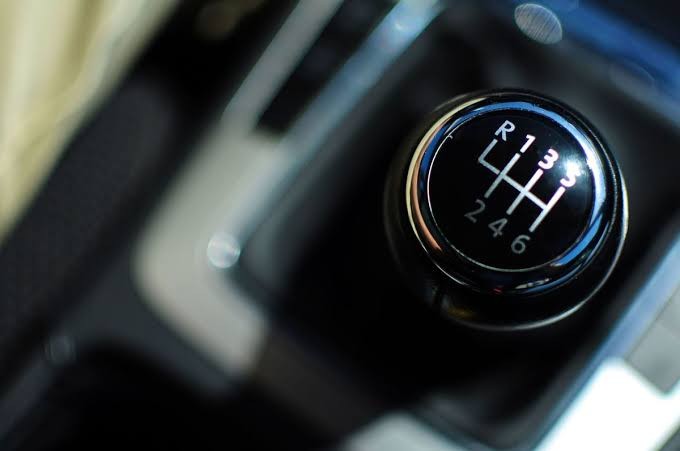Manual transmission gear shifts are not simpler and in a straight line because they are designed to match the mechanics of the transmission system and the needs of the driver.
Manual transmission is a type of transmission system that allows the driver to manually select and change gears using a gear stick and a clutch pedal. Manual transmission is also known as stick shift, standard transmission, or manual gearbox. Manual transmission is preferred by some drivers for its better fuel efficiency, more control, and more fun.
However, manual transmission also has some drawbacks, such as the complexity of shifting gears, the need to coordinate the clutch and the throttle, and the possibility of stalling or damaging the engine. One of the most common questions that manual transmission drivers or learners have is why the gear shifts are not simpler and in a straight line. Why do they have to follow a multi-legged H-pattern or a zigzag pattern to change gears?
In this article, we will explain the reasons behind the design of manual transmission gear shifts, and compare them with other types of transmission systems that have simpler or sequential gear shifts.
The Advantages of the H-Pattern
The H-pattern is the most common layout for manual transmission gear shifts. It consists of four to six forward gears arranged in two rows, plus a reverse gear at one end. The gear stick can move horizontally and vertically to select different gears. For example, in a typical five-speed manual transmission, the H-pattern looks like this:
1 3 5
| | |
2 4 R
The H-pattern has several advantages for shifting between adjacent gears. When you are in 3rd gear, for example, you can easily shift to either 2nd or 4th gear by moving the gear stick slightly to the left or right, and then up or down. This is very convenient when you need to adjust your speed according to the road conditions or traffic.
Read Also: Manual Transmission Driving Techniques for Improved Fuel Efficiency
In fact, making it easy to shift from 3rd to 1st (or from 3rd to reverse) would probably be a bad thing, because it could cause damage to your engine or transmission if you do it accidentally or at high speed. The H-pattern prevents this by forcing you to change directions every time you shift, minimizing the possibility that you will skip or double shift.
The H-pattern also matches the actual gates in your transmission, which do not align exactly with the diagram on the knob. They look a little more like this:
1 3 5
\ \ \
| | |
/ / /
2 4 R
As you can see, it is much easier to shift from 4th to 3rd or 5th than to 1st. This is because the lower gears require more force and precision to engage and disengage, while the higher gears are more smooth and easy.
The Alternatives to the H-Pattern
The H-pattern is not the only way to arrange manual transmission gear shifts. There are other types of transmission systems that have simpler or sequential gear shifts. However, they are not very common or practical for everyday driving.
One alternative is the sequential transmission or gearbox, which is mainly used in race cars and modern motorcycles. The sequential transmission has all the gears arranged in a straight line, and they can be manually or pneumatically selected by moving the gear stick or lever forward or backward. For example, in a six-speed sequential transmission, the layout looks like this:
N - 1 - 2 - 3 - 4 - 5 - 6
The sequential transmission has some advantages over the H-pattern, such as quicker and faster shifts, less mechanical wear and tear, and less driver error. However, it also has some disadvantages, such as higher cost, lower fuel efficiency, and inability to skip gears.
For instance, if you want to downshift from 5th to 3rd for passing, you have to go through 4th first. This can be inconvenient or dangerous in some situations.
Read Also: Decoding Transmission Types: Manual, Automatic, CVT, and DCT
Another alternative is the tiptronic transmission or gearbox, which is a type of automatic transmission that allows the driver to manually override the automatic mode and select gears using a gear stick or paddles on the steering wheel. The tiptronic transmission has only two slots or paddles for shifting gears: one for upshifting (+) and one for downshifting (-). For example, in a five-speed tiptronic transmission, the layout looks like this:
P R N D S
| | | | |
+ -
The tiptronic transmission combines some of the benefits of both manual and automatic transmissions, such as better performance, more control, and more convenience. However, it also has some drawbacks, such as higher cost, lower reliability, and less fun. The tiptronic transmission does not give the driver full control over the gears, as it still relies on an electronic system that can override the driver's input if necessary. The tiptronic transmission also does not provide the same feedback and feel as a true manual transmission.
Read Also: Mastering the Art of Hill Starts in a Manual Transmission Car
Conclusion
The H-pattern is the most common and effective layout for manual transmission gear shifts, as it allows the driver to easily and safely shift between adjacent gears. Other types of transmission systems that have simpler or sequential gear shifts, such as sequential transmission or tiptronic transmission, are mainly used in race cars or motorcycles, or as an option in some automatic cars. They have their own advantages and disadvantages, but they are not very suitable or popular for everyday driving.

Comments (0)
Please login to join the discussion
Be the first to comment on this article!
Share your thoughts and start the discussion